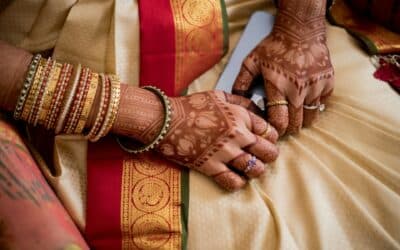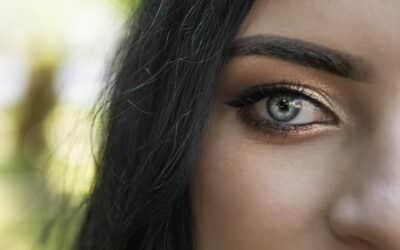Bridal henna, also known as mehndi, is a beautiful and timeless tradition that has been part of weddings across many cultures for centuries. In 2024, this art form continues to be an important aspect of bridal preparations. The intricate designs and rich cultural significance make it a cherished part of any wedding ceremony.
In Robina, brides-to-be have many options for making their henna designs truly special. Whether you lean towards traditional patterns or wish to incorporate contemporary elements, henna allows you to express your identity and make a statement on your big day. With the right preparation and aftercare, your henna will look stunning and last through all the celebrations, adding a special touch to your wedding moments.
The Cultural Significance of Bridal Henna
Historical Roots and Traditions
Bridal henna has a rich history that dates back thousands of years. It is believed to have originated in ancient Egypt and was later adopted by various cultures, including those in India, Pakistan, and the Middle East. Henna, made from the leaves of the henna plant, is used to create intricate designs on the bride’s hands and feet.
The henna ceremony is traditionally a joyous event where family and friends gather to celebrate the bride. It is often held a day or two before the wedding. The henna paste is applied in elaborate patterns while women sing traditional songs and share stories. Historically, the process was seen as a way to bring the bride good luck, beauty, and protection as she stepped into her new life.
Symbolism in Henna Designs
Henna designs are more than just beautiful patterns; they hold significant meaning. Each element in a design symbolises something special. For example, the sun and moon motifs often represent eternal love and unity. Flowers and leaves symbolise joy and new beginnings, while peacocks signify beauty and elegance.
The colour and lasting power of the henna also carry symbolic weight. A deep, dark stain is considered a sign of luck and is believed to reflect the strength of the marriage bond. The intricate designs themselves are thought to bring happiness and prosperity to the new couple, making bridal henna an essential part of the wedding tradition.
Modern Trends in Bridal Henna
Fusion of Traditional and Contemporary Styles
Modern brides are embracing both traditional and contemporary elements in their henna designs. This fusion creates unique and personalised patterns that reflect the bride’s individuality. While traditional designs hold strong, there is a trend towards integrating elements from various cultures, such as Moroccan or Arabic motifs, into classic Indian designs.
Contemporary brides may also personalise their henna with symbols that have personal significance, like initials, wedding dates, or even small portraits. This blend of old and new allows for a fresh take on the ancient art form, making it relevant and special for today’s weddings in Robina.
Popular Design Trends for Modern Brides
Several design trends are popular among modern brides:
1. Minimalist Patterns: Simple, less cluttered designs focusing on fine lines and elegant motifs.
2. Geometric Shapes: Incorporating triangles, squares, and lines for a modern look.
3. Floral and Leafy Motifs: Traditional flowers and leaves are designed in new, creative ways.
4. Personalised Elements: Adding initials, wedding dates, or meaningful symbols.
5. Mix of Cultures: Combining elements from different henna traditions creates a unique design.
These trends offer modern brides the opportunity to have meaningful and stylish henna designs. Whether you opt for a minimalist look or a blend of cultural motifs, the possibilities are endless, allowing each bride to showcase her style beautifully.
Choosing the Perfect Bridal Henna Artist
Qualities to Look For in a Henna Artist
Finding the right henna artist is key to getting beautiful and meaningful designs. Look for these qualities when choosing a henna artist:
1. Experience: An experienced artist will have a portfolio showcasing their work. They should be skilled in various styles and able to create detailed designs.
2. Creativity: A good henna artist will have a unique style and the ability to personalise designs. They can adapt traditional patterns to fit your preferences.
3. Professionalism: Reliability and professionalism are important. The artist should arrive on time, prepare their materials hygienically, and communicate clearly.
4. Patience: Applying henna is a time-consuming process. The artist should be patient and dedicated to ensuring every detail is perfect.
5. Client Reviews: Positive reviews from previous clients can give you confidence in the artist’s abilities and service quality.
Questions to Ask During the Consultation
Before booking your henna appointment, have a consultation with the artist. Essential questions include:
1. Do you have a portfolio of your work? Reviewing their past work helps you understand their style.
2. What types of henna do you use? Ensure they use natural, high-quality henna to avoid skin reactions.
3. How should I prepare my skin? An experienced artist should provide guidance on how to prep your skin for the henna.
4. How long will the henna last? Knowing the duration helps you plan when to get the henna applied.
5. What aftercare should I follow? Proper aftercare is crucial for maintaining the henna design’s vibrancy.
Asking these questions ensures you choose the best artist for your bridal henna, enhancing your overall experience and satisfaction.
Preparing for Your Henna Session
Skin Preparation Tips for Long-Lasting Henna
Proper preparation can greatly affect how long and vibrant your henna lasts. Here are some tips:
– Exfoliate Gently: Use a gentle exfoliator to remove dead skin cells a couple days before your session. This helps the henna adhere better.
– Avoid Moisturiser: On the day of your appointment, avoid using lotions or oils on the areas where henna will be applied, as they can create a barrier.
– Clean Skin: Make sure your skin is clean and dry. Wash it thoroughly to remove any dirt or oils that could affect the henna stain.
– Shave or Wax: If you usually remove hair from the area where henna will be applied, do so at least 24 hours before the session to avoid irritation.
Following these preparation steps will help ensure a vibrant and long-lasting henna design.
Aftercare Tips to Maintain Vibrant Henna Designs
Proper aftercare is essential for maintaining the beauty and longevity of your henna. Here are some aftercare tips:
– Leave Paste on for Long: Keep the henna paste on your skin for at least 6-8 hours or overnight. The longer it’s on, the darker the stain will be.
– Avoid Water: For the first 24 hours after removing the paste, avoid water on the hennaed area to allow the stain to develop fully.
– Apply Lemon-Sugar Solution: Dabbing a mixture of lemon juice and sugar can help set the henna and deepen the colour.
– Use Natural Oils: After removing the paste, apply natural oils like coconut or olive oil to moisturise the skin and protect the henna stain.
– Avoid Harsh Chemicals: To prevent fading, avoid soaps, shampoos, or other chemicals on the hennaed skin for a few days.
With these aftercare tips, your henna will stay bright and beautiful throughout your wedding celebrations.
Conclusion
Bridal henna is a beautiful blend of tradition and modernity, offering brides a unique way to enhance their wedding look. Understanding its cultural significance and embracing modern trends allows you to create personalised and meaningful designs. Choosing the right henna artist and preparing your skin properly ensures that your henna will look stunning and last longer.
Whether you prefer classic patterns or a fusion of styles, henna adds a special touch to your wedding day. It’s a wonderful way to celebrate your heritage and express your style.
Ready to get your perfect bridal henna? Visit Elegant Beauty and Brows in Robina and let our skilled artists create a Henna eyebrow design that’s just right for you. Book your appointment today and make your wedding even more memorable!




0 Comments